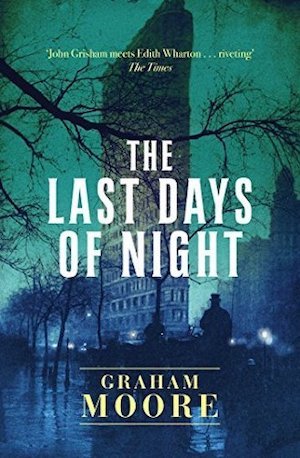The Last Days of Night: The First Novel that I can't Stop Reading

About this book
A thrilling novel based on actual events, about the nature of genius, the cost of ambition, and the battle to electrify America.
My thoughts
This is the first novel that I’ve read from the beginning to end. I couldn’t stop reading it because not only is the story intriguing, but also it’s easy to understand since each chapter is short enough. It’s great for me as an English learner.
The book changed my perspective on Thomas Edison. Most people, including myself, think of Thomas Edison as a great inventor. While this is true, the book gave me a different perspective. He was not only an inventor but also a CEO of companies that created assembly lines which produced new inventions.
» The Last Days of Night (Graham Moore)
My highlights
“Edison dictated the problems,” Fessenden explained. “We solved them. Experimentation, that’s how he did it. Endless, tedious experimentation. Invention, you know, it isn’t like the way the press describes it. It’s not Edison in a dark room with a box full of wires. It’s a system. It’s industry. It’s the man at the top, Thomas, saying, We’re going to build a light bulb. Here are all the ways people have tried to build light bulbs before. They don’t work. Now, let’s you lot find a way that does. And then he’d set fifty of us on that task, for a year. And eventually…a light bulb.”
“Mr. Thomas Edison would be unable to understand the designs I have done if even they were built before his eyeballs. He is not inventing. He is not science. He is a face for the photographs. An actor on the boards.”
That laboratory is a place I will not return to, do you understand? It’s not only the filth. It’s the absence of vision. Let’s say you want to do something…say, all right, say you wanted to build a table. So you would set out the top, and then Edison would say, Let us try building it with two legs! And a reasonable man would respond, But a table clearly should have on it four legs. Let us build that. And Edison would say, But we must experiment. That was the word he loved—‘experiment.’ He was experimenting always. Every possibility, every variation, every useless, no-point, waste-of-time modification he could devise. So the two-legged table, it would not work. And I would say, Might we now build our four-legged table? And Edison would say, No, let us try a three-legged table! And he would build it. And then, at long length, six months later, you would finally be granted permission from Lord Sir Thomas Edison to build a table of four legs. You have wasted half a year on a task that should have cost you but a day. Edison General Electric’s lab is not designed to foster invention. It is designed to foster tedium.” “So
“Having failed to produce a better product than you, he’s now going to use the law to make your product illegal. I’ve already sent a message to my state senator. I’ll argue your case before the legislature myself. He can’t bribe all of them.”
Deciding what not to do is as important as deciding what to do. —STEVE JOBS
At the top of the pyramid, Edison would identify problems to be solved. He would look for weaknesses in the marketplace and locate areas that might be ripe for a new invention. He would then set a team to determine what technological problems stood between the current state of the industry and a proper solution. Once this team had isolated the relevant issues, a phalanx of under-inventors would tinker and toil on possible solutions until some breakthrough had been made. Then this army would be loosed upon an endless variety of potential refinements, until, by sheer volume of trial and error, an “invention” was produced. And that invention would be patented, mass-produced, and marketed under one name.
I hired those engineers. I set them to their task. I defined the scope of their inquiry and then set the method by which they might inquire. For a century scientists had failed to build an indoor electrical lamp. Until me. How did I do it? That’s what you want to hear? It was this: I surveyed all the designs that had been tried before. I saw what had gotten close; I saw what had fallen short of the mark. I found the cracks and I set my men to paving them. This is what science is, Mr. Cravath. This is what discovery is. It’s not a flash of color. It’s not a moment of divine inspiration. It is not the hand of God reaching down to press the pointed finger. It’s work. It’s drudgery. It is trying ten thousand different shapes of bulb. Then trying ten thousand different air fillings. Then, yes, ten thousand different filaments. It is realizing that those are the three components that matter and then trying ten thousand times ten thousand times ten thousand combinations until one of them works. And then selling it to a public who never thought such a thing was possible.
